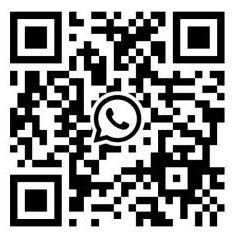It is reported that the Ministry of Industry and Information Technology issued Document No. 129 on October 14, 2021, entitled "Notice on Strengthening and Standardizing Radio Management in the 2400MHz, 5100MHz, and 5800MHz Frequency Bands", and Document No. 129 will enforce model approval in accordance with new requirements after October 15, 2023.
1.SRRC meets the requirements of new and old standards for 2.4G, 5.1G, and 5.8G
|
BT and WIFI New and Old Standards |
|
|
Old Standards |
New Standards |
|
Ministry of Information Technology [2002] No. 353 (Corresponding to the 2400-2483.5MHz frequency band of BTWIFI) |
Ministry of Industry and Information Technology [2021] No. 129 |
|
Ministry of Information Technology [2002] No. 227 (Corresponding to the 5725-5850MHz frequency band of WIFI) |
|
|
Ministry of Information Technology [2012] No. 620 (Corresponding to the 5150-5350MHz frequency band of WIFI) |
|
Kind reminder: The validity period of the old certificate is until December 31, 2025. If the enterprise still wants to continue selling old standard products after the certificate expires, it should upgrade the certification standards at least six months in advance and apply for a certificate extension 30 days in advance.
2.What products are SRRC certified for?
2.1 Public mobile communication equipment
①GSM/CDMA/Bluetooth mobile phone
② GSM/CDMA/Bluetooth landline phone
③GSM/CDMA/Bluetooth module
④GSM/CDMA/Bluetooth network card
⑤GSM/CDMA/Bluetooth data terminal
⑥ GSM/CDMA base stations, amplifiers, and repeaters
2.2 2.4GHz/5.8 GHz wireless access devices
①2.4GHz/5.8GHz wireless LAN devices
②4GHz/5.8GHz wireless local area network card
③2.4GHz/5.8GHz spread spectrum communication equipment
④ 2.4GHz/5.8GHz wireless LAN devices Bluetooth devices
⑤ Bluetooth devices (keyboard, mouse, etc.)
2.3 Private network equipment
①Digital radio station
② Public walkie talkies
③FM handheld station
④ FM base station
⑤No central device terminal
2.4 Digital cluster products and broadcasting equipment
①Mono channel FM broadcasting transmitter
②Stereo FM broadcasting transmitter
③ Medium wave amplitude modulation broadcasting transmitter
④ Short wave amplitude modulation broadcasting transmitter
⑤Analog TV transmitter
⑥Digital broadcasting transmitter
⑦ Digital TV transmission
2.4 Microwave equipment
①Digital microwave communication machine
②Point to multipoint digital microwave communication system central station/terminal station
③ Point to Point Digital Microwave Communication System Center Station/Terminal Station
④Digital relay communication equipment
2.6 Other radio transmission equipment
①Paging transmitter
②Bidirectional paging transmitter
Micropower (short range) wireless devices do not require SRRC certification, such as 27MHz and 40MHz remote-controlled aircraft and remote-controlled vehicles for toys, which do not require radio model approval certification. However, it is still necessary to note that the requirements for national standard electric toys include relevant requirements for Bluetooth and WIFI technology toy products.
3.Differences in SRRC certification testing between old and new regulations
3.1 Strict channel sideband restrictions
The 2.4G/5.1G/5.8G product has become stricter for high channel sidebands, adding additional frequency band requirements on top of the previous out of band spurious limit of -80dBm/Hz.
3.1.1 Special frequency band spurious emission: 2400MHz
|
Frequency range |
Limiting value |
Measurement bandwidth |
Detection mode |
|
48.5-72. 5MHz |
-54dBm |
100kHz |
RMS |
|
76- 1 18MHz |
-54dBm |
100kHz |
RMS |
|
167-223MHz |
-54dBm |
100kHz |
RMS |
|
470-702MHz |
-54dBm |
100kHz |
RMS |
|
2300-2380MHz |
- 40dBm |
1MHz |
RMS |
|
2380- 2390MHz |
- 40dBm |
100kHz |
RMS |
|
2390-2400MHz |
- 30dBm |
100kHz |
RMS |
|
2400 -2483.5MHz* |
33dBm |
100kHz |
RMS |
|
2483. 5-2500MHz |
- 40dBm |
1MHz |
RMS |
|
5150-5350MHz |
- 40dBm |
1MHz |
RMS |
|
5725-5850MHz |
- 40dBm |
1MHz |
RMS |
|
*Note: The spurious limit requirement for the 2400-2483.5MHz frequency band is in band spurious emission. |
|||
3.1.2 Special frequency band spurious emission: 5100MHz
|
Frequency range |
Limiting value |
Measurement bandwidth |
Detection mode |
|
48.5-72. 5MHz |
54dBm |
100kHz |
RMS |
|
76- 1 18MHz |
54dBm |
100kHz |
RMS |
|
167-223MHz |
54dBm |
100kHz |
RMS |
|
470-702MHz |
54dBm |
100kHz |
RMS |
|
2400-2483.5MHz |
- 40dBm |
1MHz |
RMS |
|
2483.5- 2500MHz |
- 40dBm |
1MHz |
RMS |
|
5150-5350MHz |
33dBm |
100kHz |
RMS |
|
5725-5850MHz |
40dBm |
1MHz |
RMS |
|
*Note: The stray emission limit in the 5150-5350MHz frequency band is required to be in band stray emission. |
|||
3.1.3 Special frequency band spurious emission: 5800MHz
|
Frequency range |
Limiting value |
Measurement bandwidth |
Detection mode |
|
48.5-72. 5MHz |
-54dBm |
100kHz |
RMS |
|
76- 1 18MHz |
-54dBm |
100kHz |
RMS |
|
167-223MHz |
-54dBm |
100kHz |
RMS |
|
470-702MHz |
-54dBm |
100kHz |
RMS |
|
2400-2483.5MHz |
- 40dBm |
1MHz |
RMS |
|
2483.5- 2500MHz |
- 40dBm |
1MHz |
RMS |
|
5150-5350MHz |
- 40dBm |
1MHz |
RMS |
|
5470 -5705MHz* |
- 40dBm |
1MHz |
RMS |
|
5705-5715MHz |
- 40dBm |
100kHz |
RMS |
|
5715-5725MHz |
- 30dBm |
100kHz |
RMS |
|
5725-5850MHz |
- 33dBm |
100kHz |
RMS |
|
5850-5855MHz |
- 30dBm |
100kHz |
RMS |
|
5855-7125MHz |
- 40dBm |
1MHz |
RMS |
|
*Note: The spurious limit requirement for the 5725-5850MHz frequency band is in band spurious emission. |
|||
3.2 DFS slightly different
The wireless transmission equipment should adopt Dynamic Frequency Selection (DFS) interference suppression technology, which should be changed to and cannot be set with the option to turn off DFS.
The addition of wireless transmission equipment should adopt Transmission Power Control (TPC) interference suppression technology, with a TPC range of no less than 6dB; If there is no TPC function, the equivalent omnidirectional radiation power and the equivalent omnidirectional radiation power spectral density limit should be reduced by 3dB.
3.3 Increase interference avoidance testing
The interference avoidance determination method is basically consistent with the adaptive requirements of CE certification.
3.3.1 2.4G interference avoidance requirements:
①When it is found that the frequency has been occupied, transmission should not continue on that channel frequency, and the occupancy time should not exceed 13ms. That is to say, transmission must be stopped within the occupied time of a channel.
② The device can maintain short control signal transmission, but the duty cycle of the signal should be less than or equal to 10%.
3.3.2 5G interference avoidance requirements:
①When it is found that there is a signal with a usage frequency higher than the detection threshold, the transmission should be immediately stopped, and the maximum channel occupancy time is 20ms.
② Within a 50ms observation period, the number of short control signaling signal transmissions should be less than or equal to 50 times, and during the above observation period, the total time for short control signal transmission of the equipment should be less than 2500us or the duty cycle of short space signaling transmission signal should not exceed 10%.
3.3.3 5.8G Interference Avoidance Requirements:
Both by old regulations and CE, there is no requirement for 5.8G interference avoidance, so 5.8G interference avoidance poses greater risks compared to 5.1G and 2.4G wifi.
3.3.4 Bluetooth (BT) interference avoidance requirements:
The new SRRC requires testing interference avoidance for Bluetooth, and there are no exemption conditions (CE certification is only required for power greater than 10dBm).
The above is all the content of the new regulations. We hope that everyone can pay attention to the certification validity period of their own products and the differences in new product testing in a timely manner. If you have any other questions about the new regulations, please feel free to consult at any time!
Post time: Dec-26-2023











